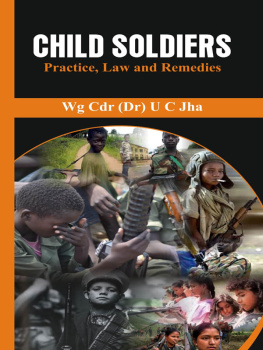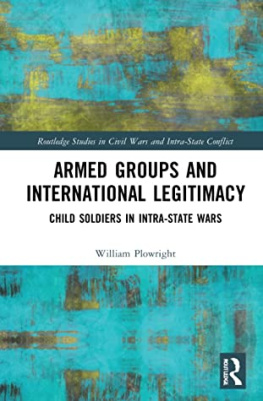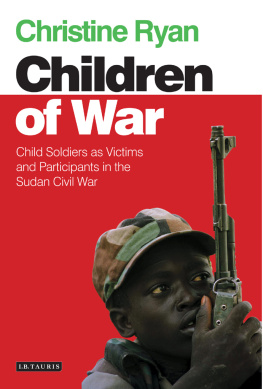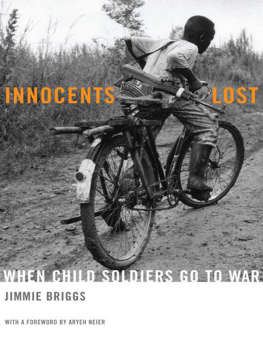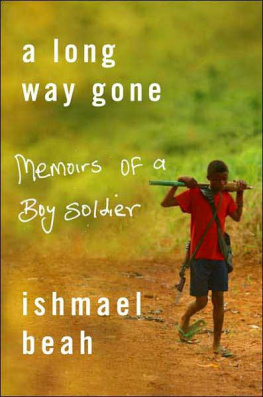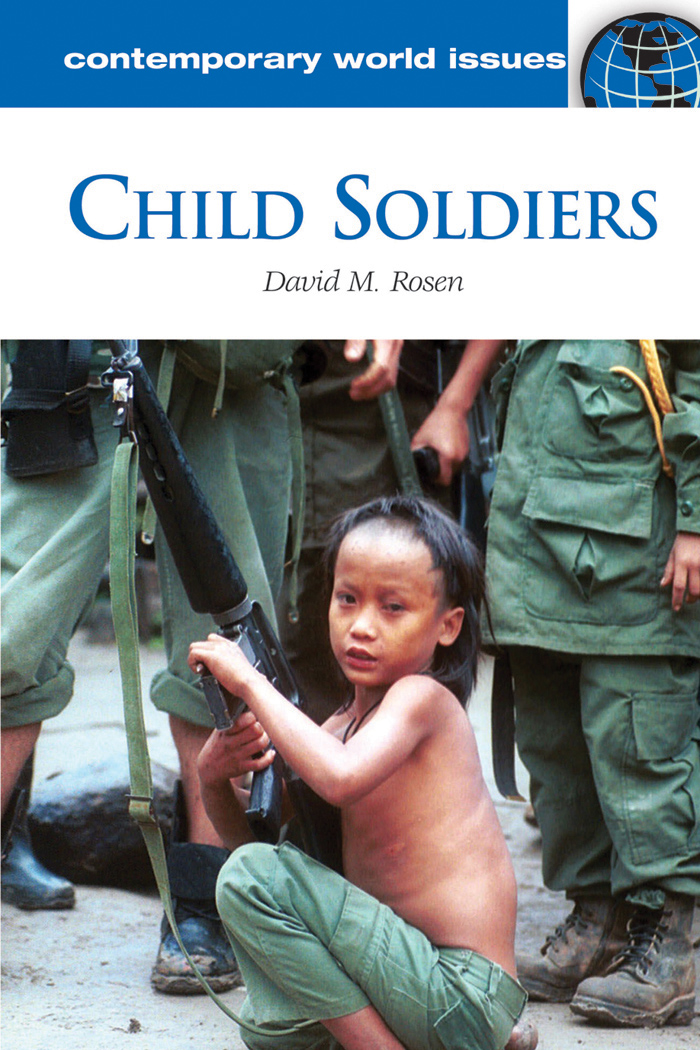
David M. Rosen is professor of anthropology at Fairleigh Dickinson University in Madison, New Jersey, where he teaches courses in anthropology and law. He has carried out field research in Sierra Leone, Kenya, Israel, and the Palestinian Territories. He is the author of Armies of the Young: Child Soldiers in War and Terrorism (Rutgers University Press, 2005). His recent articles include Child Soldiers, International Humanitarian Law, and the Globalization of Childhood in the American Anthropologist (2007), Who Is a Child? The Legal Conundrum of Child Soldiers in the Connecticut Journal of International Law (2009), and The Child Soldier in Literature or How Johnny Tremain Became Johnny Mad Dog in Maartje Abbenhuis and Sara Buttersworth (eds.), Restaging War in the Western World: Non-Combatant Experience (Palgrave Macmillan, 2009). He received his PhD from the University of Illinois, UrbanaChampaign, and his JD from Pace University School of Law. He is admitted to the bar in the state of New York.
Child Soldiers
A Reference Handbook
David M. Rosen
ABC-CLIO
Copyright 2012 by ABC-CLIO, LLC
All rights reserved. No part of this publication may be reproduced, stored in a retrieval system, or transmitted, in any form or by any means, electronic, mechanical, photocopying, recording, or otherwise, except for the inclusion of brief quotations in a review, without prior permission in writing from the publisher.
Library of Congress Cataloging-in-Publication Data
Rosen, David M., 1944
Child soldiers : a reference handbook / David M. Rosen.
p. cm. (Contemporary world issues)
Includes bibliographical references and index.
ISBN 978-1-59884-526-6 (hardcopy : alk. paper) ISBN 978-1-59884-527-3 (ebook) 1. Child soldiers. 2. Children and war. I. Title.
UB418.C45R67 2012
355.33083dc23 2012000449
ISBN: 978-1-59884-526-6
EISBN: 978-1-59884-527-3
16 15 14 13 12 1 2 3 4 5
This book is also available on the World Wide Web as an eBook.
Visit www.abc-clio.com for details.
ABC-CLIO, LLC
130 Cremona Drive, P.O. Box 1911
Santa Barbara, California 93116-1911
This book is printed on acid-free paper
Manufactured in the United States of America
Every reasonable effort has been made to trace the owners of copyrighted materials in this book, but in some instances this has proven impossible. The author and publisher will be glad to receive information leading to more complete acknowledgments in subsequent printings of the book and in the meantime extend their apologies for any omissions.
Selected Titles in ABC-CLIOs CONTEMPORARY WORLD ISSUES Series
Autism Spectrum Disorders, Raphael Bernier and Jennifer Gerdts
Celebrity in the 21st Century, Larry Z. Leslie
Climate Change, David L. Downie, Kate Brash, and Catherine Vaughan
Domestic Violence, Margi Laird McCue
Education in Crisis, Judith A. Gouwens
Environmental Justice, David E. Newton
Genocide, Howard Ball
Global Organized Crime, Mitchel P. Roth
Latino Issues, Rogelio Senz and Aurelia Lorena Murga
Lobbying in America, Ronald J. Hrebenar and Bryson B. Morgan
Modern Homelessness, Mary Ellen Hombs
Modern Piracy, David F. Marley
Modern Sports Ethics, Angela Lumpkin
Obesity, Judith Stern and Alexandra Kazaks
Online Privacy, Robert Gellman and Pam Dixon
Same-Sex Marriage, David E. Newton
Sentencing, Dean John Champion
Sexual Health, David E. Newton
Space and Security, Peter L. Hays
Substance Abuse, David E. Newton
U.S. Border Security, Judith A. Warner
U.S. Space Policy, Peter L. Hays, Ph.D.
Virtual Lives, James D. Ivory
Women in Combat, Rosemarie Skaine
Women in Developing Countries, Karen L. Kinnear
Youth and Political Participation, Glenn H. Utter
For a complete list of titles in this series, please visit www.abc-clio.com
Books in the Contemporary World Issues series address vital issues in todays society, such as genetic engineering, pollution, and biodiversity. Written by professional writers, scholars, and nonacademic experts, these books are authoritative, clearly written, up-to-date, and objective. They provide a good starting point for research by high school and college students, scholars, and general readers as well as by legislators, businesspeople, activists, and others.
Each book, carefully organized and easy to use, contains an overview of the subject, a detailed chronology, biographical sketches, facts and data and/or documents and other primary-source material, a directory of organizations and agencies, annotated lists of print and nonprint resources, and an index.
Readers of books in the Contemporary World Issues series will find the information they need to have a better understanding of the social, political, environmental, and economic issues facing the world today.
Contents
Preface
This book is about child soldiers and the efforts over the past several decades to end childrens presence in the military across the globe. The elimination of children from armed forces and armed groups is no easy task. The presence of children and youth in armed conflicts has a long history. A list of the most well known individuals who by todays standards would be called child soldiers would include Joan of Arc, Andrew Jackson, Moshe Dayan, Yasser Arafat, and many others from all walks of life. Put simply, in decades past, it was not that unusual for children to be part of armed forces and armed groups. In the early nineteenth century, the U.S. Navy was permitted to recruit boys as young as age 13, while the U.S. Marine Corps was permitted to recruit youngsters as young as age 11. One of the best descriptions of life in the Continental Army during the American Revolution was written by Joseph Plumb Martin, who was only age 15 when he enlisted along with many of his age-mates. Of course, youngsters never made up the majority of those who served in the armed forces, but neither were they a rarity. Throughout the eighteenth and nineteenth centuries, children and youth were a regular presence in military life.
Beginning in the middle of the nineteenth century, most Western nations began to reduce or eliminate children from their armed forces. Changes in the age of recruitment accompanied fundamental changes in thinking about children and childhood. In the eighteenth century, the boundaries between childhood and adulthood were less clear than they seem to be today. Children occupied many roles that today are often seen as suitable only for adults. Children brought home wages, worked on family farms, and often had a great deal of practical personal autonomy. Even as late as World War II, children in many countries began full-time work by the time they were age 14. Nevertheless, it is clear that by the middle of the nineteenth century, cultural and social distinctions between childhood and adulthood were hardening. Childhood increasingly came to be regarded as a separate and distinct stage of life characterized by innocence, vulnerability, and the need for protection. Moreover, as ideas about childhood changed, so did the ideas about whether children should serve in the military. As children came to be seen as increasingly innocent and vulnerable, military service and childhood came to be seen as increasingly incompatible.


